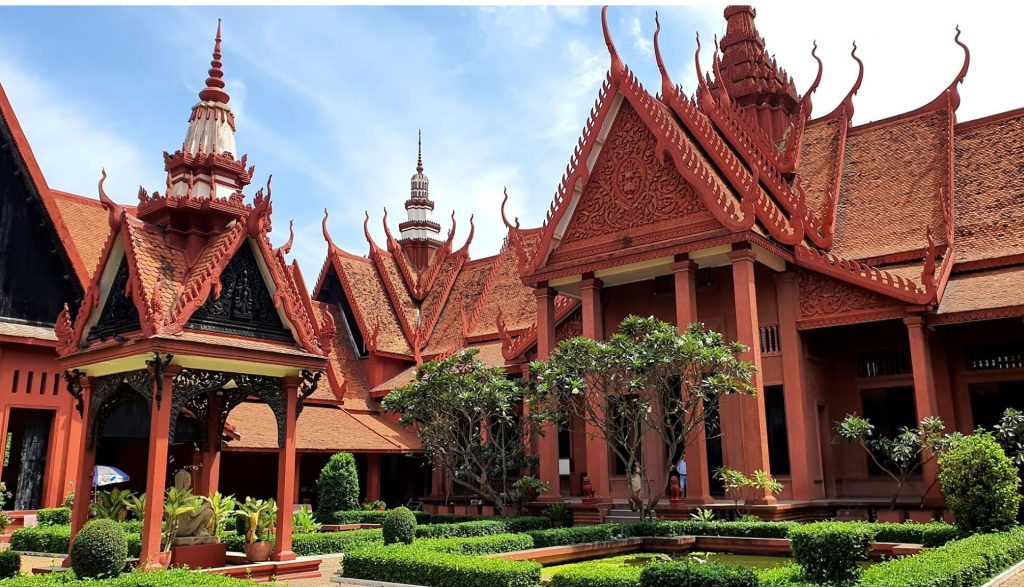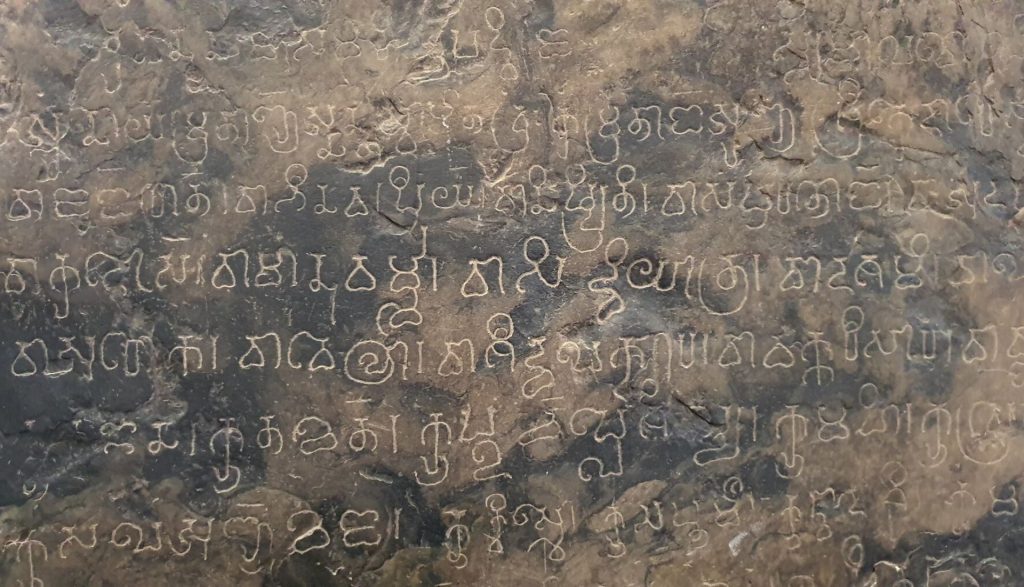Phnom Penh’s National Museum

Ancient relics from the Angkorian era are housed within the National Museum.
You can find the Visitor Entrance, Ticket Booth, and the museum’s Address at the intersection of Streets 13 and 182.
We recommend that you hire a guide for USD6 extra per person if your group is between 1 and 6 people.
Opening hours: 8.00 – 17.00. (Last entrance at 16.30).
Travel Tip : Do not take photos inside museums
Enjoy an evening performance of Cambodian Dance & Music Tradition.
It was built in 1917 and designed by French architects.
The rooms or galleries each depict a specific area, or objects made from bronze, ceramics or stone.
The National Museum’s entrance is adorned with 2 guardian Lions.
Bronze statues from the 6-13 th centuries are found in the 1 _st Gallery.
The National Museum is divided into three periods:
- Pre Angkor 6 – 9th century
- Angkor 9 – 15th century
- Post Angkor 15th century
Travel Tip: We recommend that you start your journey in Phnom Penh by visiting the National Museum.
The Galleries 2 and 3 gallery includes artifacts that are made of sandstone.

The site contains an inscription on a sandstone slab from the 6th century that is read left-to-right. It was found in 1940.
One of the oldest Buddhas is found in the first st gallery, which contains artifacts dating back to Pre-Angkor. It is made out of sandstone from the 6th Century.
The oldest Buddha, made of sandstone and originally from India.
In the 2 and rooms, there is a Hindu god Vishnu from the 7th century who protects the entire world. The French discovered it in a cave in 1935.
The museum also boasts the largest scarf ever created in Cambodia in 2018. The 1149.8-metre scarf was created by 22,315 women aged 4 to 88.
Wat Phnom Phnom Penh

According to a legend, the first pagoda on this site was built in 1373 AD and housed 4 Buddha statues. Penh, a Penh-named woman, discovered the statues after they were washed up by the Mekong river. This Wat is the reason for the city’s name. It is situated on a 30m-high hill, which is a natural rise.
